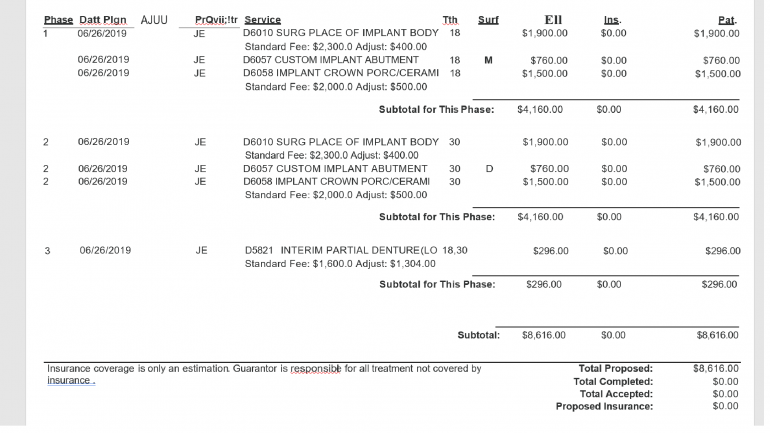
Dental Code D7283: Placement of device to facilitate eruption of impacted tooth
Dental code D7283 refers to the placement of a device that aids in the eruption of impacted teeth. When a tooth fails to emerge properly from the gum line, it is considered impacted. This can cause discomfort, misalignment, and potential complications if left untreated. In such cases, dental professionals may recommend the use of an eruption facilitation device to assist in the tooth's proper eruption.
Initial Assessment and Diagnosis
The first step in the process involves a thorough examination by a dental professional to assess the impacted tooth and determine the most suitable treatment approach. During this assessment, the dentist will carefully examine the patient's oral cavity, including the tooth in question. They may also use digital X-rays or other imaging techniques to obtain a detailed view of the impacted tooth's position and its relationship with neighboring teeth and structures.
Based on the diagnosis, the dentist will categorize the impaction as either soft tissue impaction (where the tooth is partially covered by gum tissue) or bony impaction (where the tooth is completely encased in bone). This classification is crucial in determining the appropriate eruption facilitation device and treatment plan.
Treatment Planning and Device Selection
Once the impaction is confirmed, the dentist will develop a personalized treatment plan. This plan includes the selection of an eruption facilitation device that best suits the patient's specific case. The choice of device depends on various factors, such as the position and severity of the impaction, the age of the patient, and the desired outcome.
Commonly used devices include orthodontic braces, aligners, or removable appliances designed specifically for eruption facilitation. Orthodontic braces are fixed appliances that consist of brackets bonded to the teeth and connected by archwires. They exert gentle pressure on the impacted tooth, gradually guiding it into its correct position. Aligners, on the other hand, are clear, removable trays that apply controlled forces to shift the tooth's position progressively.
Placement of the Eruption Facilitation Device
In this step, the chosen eruption facilitation device is carefully placed by the dental professional. If orthodontic braces are selected, brackets are bonded to the teeth using dental adhesive, and archwires are inserted into the brackets. The archwires are then secured in place using elastic or metal ligatures. This configuration creates an optimal force system that works on the impacted tooth, gradually moving it into alignment over time.
If aligners are chosen, a series of custom-made clear trays will be provided to the patient. Each tray is worn for a specific duration, typically two weeks, before being replaced by the next tray in the series. The aligners exert gentle forces on the tooth, gradually guiding it into the correct position.
The dental professional will ensure a proper fit of the eruption facilitation device and provide instructions on how to maintain oral hygiene and care for the device during the treatment period. It is essential to follow these instructions meticulously to achieve optimal results.
Monitoring and Adjustments
Regular check-up appointments will be scheduled to monitor the progress of the eruption and make any necessary adjustments to the device. These appointments allow the dental professional to assess the tooth's movement and ensure that the treatment is progressing as planned.
If braces are used, these appointments involve tightening or loosening the archwires, adjusting the positioning of brackets, or replacing ligatures. Such adjustments enable the dentist to fine-tune the forces applied to the impacted tooth, ensuring its controlled movement.
For aligner treatment, the dental professional will evaluate the fit of each tray and determine if any modifications are necessary. They may request additional dental impressions or scans to create updated trays that continue to guide the tooth's eruption effectively.
Completion of Treatment and Oral Care
Once the impacted tooth has fully erupted into its correct position, the dental professional will remove the eruption facilitation device. At this stage, the dentist may recommend further dental procedures, such as orthodontic treatment or restorative work, to ensure proper alignment and function of the newly erupted tooth.
The patient will also receive guidance on maintaining good oral hygiene and regular dental care to promote long-term oral health. This includes proper brushing and flossing techniques, regular dental check-ups, and the use of retainers or other devices, if needed, to maintain the achieved tooth position.
Summary of Dental Code D7283: Placement of device to facilitate eruption of impacted tooth
In summary, dental code D7283 involves the placement of a device to facilitate the eruption of an impacted tooth. This procedure aims to guide the tooth into its proper position, promoting alignment, function, and overall oral health. By following the steps outlined in the treatment process, dental professionals can effectively address impacted teeth and provide patients with a healthy and well-aligned smile.
Say hello to stress-free dental expenses with Dr. BestPrice! Let's make your smile journey a breeze.
